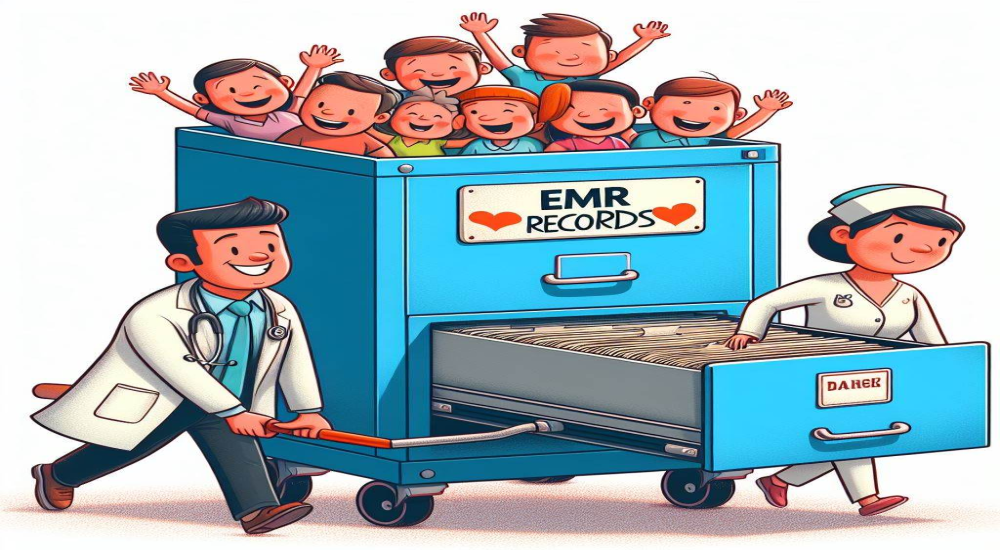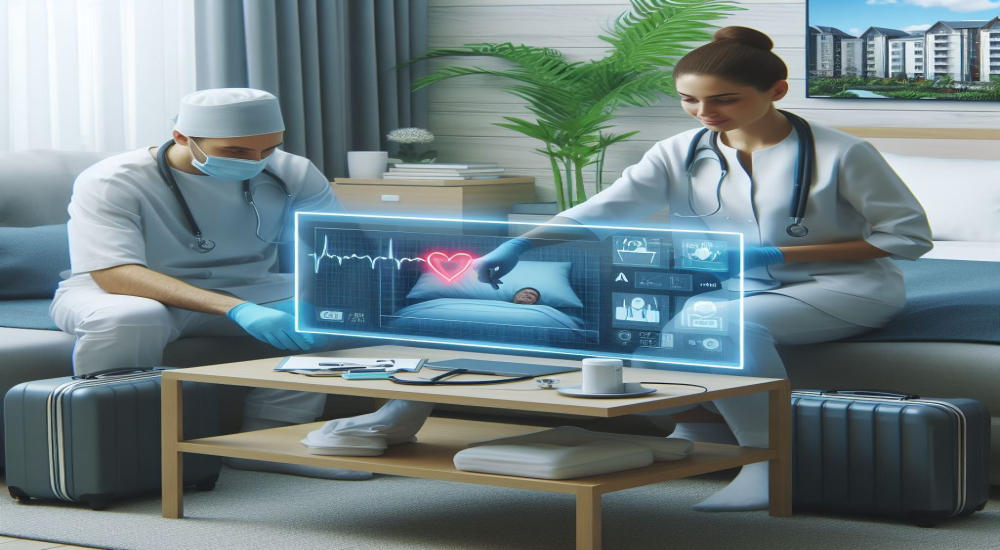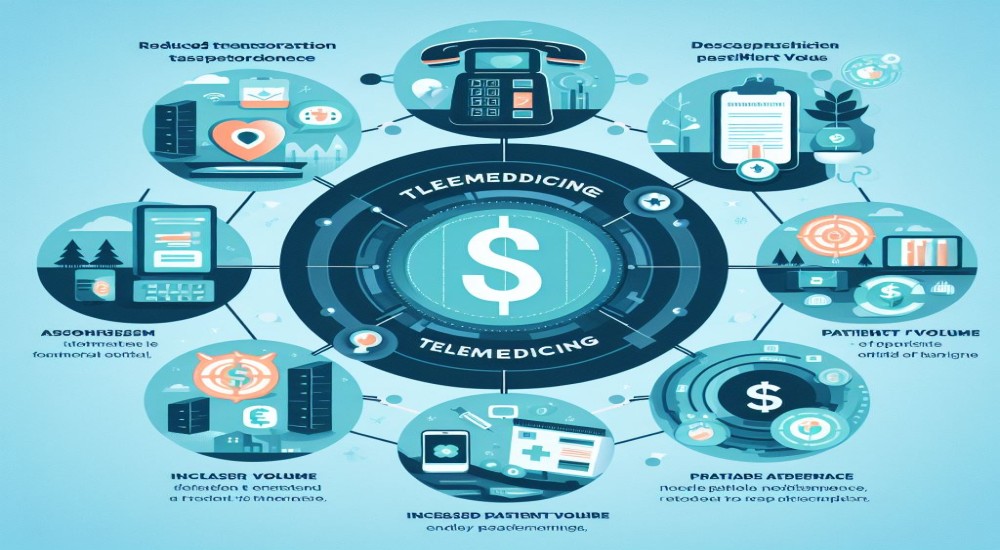Revolutionizing Animal Healthcare: Telemedicine's Role in Remote Veterinary Care
Introduction:
In recent years, telemedicine has emerged as a transformative force in healthcare, bridging the gap between patients and healthcare providers, especially in remote regions. While much attention has been given to its application in human medicine, telemedicine is also making significant strides in veterinary care. Particularly, in the realm of livestock and farm animals situated in remote areas, telemedicine holds immense potential to revolutionize how veterinary care is delivered. This article explores the benefits of telemedicine applications in veterinary care, specifically focusing on how it can enhance the well-being of livestock and farm animals in remote regions.
Challenges in Remote Veterinary Care
Livestock and farm animals in remote areas often face significant challenges in accessing timely veterinary care. These challenges include geographical barriers, limited availability of skilled veterinarians, and the high cost associated with travel for both veterinarians and animal owners. Consequently, many animals in these regions do not receive the necessary healthcare, leading to increased mortality rates and decreased productivity in farms.
Telemedicine Applications for Veterinary Care:
Telemedicine offers a solution to many of the challenges faced in remote veterinary care. Through telecommunication technologies such as video conferencing, mobile apps, and remote monitoring devices, veterinarians can remotely diagnose, treat, and monitor animals without the need for physical presence. This not only saves time and resources but also ensures that animals receive timely care regardless of their location.
Remote Consultations and Diagnostics:
One of the key benefits of telemedicine in veterinary care is remote consultations and diagnostics. Using video conferencing platforms, veterinarians can interact with animal owners, assess the animal's condition, and provide guidance on treatment options. Additionally, advances in diagnostic technologies allow veterinarians to remotely analyze samples such as blood, urine, and tissue, enabling accurate diagnosis without the need for animals to be transported to a clinic.
Remote Monitoring and Management:
Telemedicine also facilitates remote monitoring and management of animal health. Through wearable devices and sensors, veterinarians can track vital signs, activity levels, and other health parameters in real-time. This continuous monitoring enables early detection of health issues and allows for timely intervention, thereby preventing the escalation of problems and improving overall health outcomes.
Education and Training:
Another significant aspect of telemedicine in veterinary care is its role in education and training. Remote learning platforms and virtual simulations provide veterinarians and animal caregivers in remote regions with access to educational resources and training programs. This helps in enhancing their knowledge and skills, ultimately improving the quality of veterinary care delivered to animals in these areas.
Case Studies and Success Stories:
Numerous case studies and success stories illustrate the effectiveness of telemedicine in remote veterinary care. For instance, in regions of Australia where access to veterinary services is limited, telemedicine has been instrumental in providing timely care to livestock, resulting in improved animal welfare and increased productivity for farmers. Similarly, in remote areas of developing countries, telemedicine initiatives have enabled community animal health workers to deliver essential veterinary services to farmers, thereby improving livelihoods and food security.
Challenges and Considerations:
Despite its potential benefits, telemedicine in veterinary care also presents some challenges and considerations. These include issues related to internet connectivity, data security, regulatory compliance, and the need for ongoing training and support for both veterinarians and animal owners. Addressing these challenges is crucial to ensuring the widespread adoption and success of telemedicine initiatives in remote veterinary care.
Future Directions
Looking ahead, the future of telemedicine in veterinary care looks promising. Advances in technology, such as artificial intelligence and remote imaging techniques, are likely to further enhance the capabilities of telemedicine applications, enabling more accurate diagnosis and treatment of animal health conditions. Moreover, increased collaboration between stakeholders, including governments, veterinary associations, and technology providers, will be essential in expanding access to telemedicine services and ensuring equitable healthcare delivery for animals in remote regions.
The Urban Dilemma: Lack of 24/7 Veterinary Services:
Urban areas present their own set of challenges in accessing veterinary care. Despite the abundance of resources, metropolitan cities often lack veterinary hospitals offering round-the-clock services. This deficiency can prove critical in emergencies when immediate medical attention is vital for pet animals. Telemedicine emerges as a beacon of hope, providing real-time consultations and guidance during these crucial moments, potentially saving lives and mitigating suffering.

Telemedicine in Urban Pet Care:
Telemedicine applications cater not only to remote farms but also to urban pet owners seeking prompt, convenient healthcare solutions. Through teleconsultations and digital platforms, pet owners can connect with veterinarians without the constraints of geographical boundaries or office hours. Whether it's a minor concern or a pressing issue, telemedicine offers reassurance and professional advice at the touch of a button, empowering pet owners to make informed decisions regarding their furry companions' well-being.
Enhancing Accessibility and Convenience:
The convenience of telemedicine extends beyond emergency situations, making routine veterinary care more accessible to city dwellers. Busy schedules and transportation constraints often deter pet owners from scheduling veterinary appointments. Telemedicine addresses these barriers by offering virtual check-ups, follow-up consultations, and medication refills, streamlining the healthcare process and promoting proactive pet management.
Addressing Specialized Needs:
Urban environments host diverse pet populations, including exotic species and animals with specialized medical needs. Access to specialized veterinary care can be limited in urban areas, leading to frustration and compromised health outcomes. Telemedicine bridges this gap by connecting pet owners with veterinarians possessing expertise in niche areas, ensuring comprehensive and tailored healthcare for all animals, regardless of their unique requirements.
Telemedicine's Role in Education and Collaboration:
Beyond direct patient care, telemedicine fosters collaboration and knowledge exchange among veterinarians, enriching the quality of care provided. Virtual platforms facilitate case discussions, continuing education programs, and multidisciplinary consultations, enabling veterinarians to stay abreast of advancements in the field and collaborate on complex cases. This collective expertise enhances diagnostic accuracy and treatment efficacy, ultimately benefiting animals under their care.
The Promise of Technological Advancements:
The future of telemedicine in veterinary care holds immense promise, driven by ongoing technological innovations. Integrating artificial intelligence, remote monitoring devices, and teleoperated surgical systems expands the scope of telemedicine, enabling more sophisticated diagnostics and interventions. As these technologies evolve, urban pet owners can expect even greater precision, efficiency, and convenience in their pets' healthcare experiences.
Overcoming Challenges and Embracing Opportunities:
While telemedicine offers myriad benefits, its widespread adoption in veterinary care faces challenges such as regulatory hurdles, data privacy concerns, and resistance to change. Addressing these challenges requires collaboration between veterinary associations, policymakers, and technology providers to establish standards, ensure compliance, and promote trust in telemedicine services. Embracing these opportunities fosters a culture of innovation and inclusivity, benefiting animals, veterinarians, and pet owners alike.
Conclusion:
Telemedicine has the potential to revolutionize veterinary care, particularly in remote regions where access to traditional veterinary services is limited. By leveraging telecommunication technologies, veterinarians can remotely diagnose, treat, and monitor animals, thereby improving their health outcomes and enhancing overall animal welfare. As telemedicine continues to evolve and expand, it holds promise in transforming the way veterinary care is delivered, ensuring that animals in remote regions receive the quality care they deserve.


















































